#pakistan culture
Text
Resource List for Learning Pashto
Hello! Do you want to learn Pashto but don't know where to start? Then I've got the perfect resource list for you and you can find its link below! Let me know if you have any suggestions to improve it. Here is what the resource list contains;
"Handmade" resources on certain grammar concepts for easy understanding.
Resources on learning the script.
Websites to practice reading the script.
Documents to enhance your vocabulary.
Notes on Colloquial.
Music playlists
List of podcasts/audiobooks And a compiled + organized list of websites you can use to get hold of grammar!
#langauge learning#language#language resources#discord server#langblr#desiblr#studyblr#south asia#south asians#culture#desi#pakistan#pakistani#pakistan culture#pakistan history#pashto#pashto literature#khyber pakhtunkhwa#pathan#pashtun
66 notes
·
View notes
Text
You make me do
Fatima Jinnah
Known as Madar-e-Millat or mother of the nation. She was crucial in the Pakistan's fight for independence.
And founded Jinnah Medical College for Girls.
Too much labour
Yasmeen Lari
Pakistan's first female architect. She went from designing shiny corporate structures such as Karachi's finance and trade center.
To helping build shelters for those affected by earthquakes (since 2005) with the resources they had available.
All day everyday
Zennat Haroon Rashid
Founding member of the Woman's national guard in Pakistan.
Her daughter created the "Zeenat Haroon Rashid Writing Prize for Women" in her honour. Which works to support women who want to pursue writing as a career.
Therapist Mother Maid
Azra Haq
A member of the Woman's national guard in Pakistan who helped to support and aid women who had been abandoned during the partition.
Nympth and a virgin
Sheherezade Alam
A renowned ceramist who themed her work around the earth. Founder of LAAL, an artistic movement to promote and preserve Pakistani art and culture.
Nurse than a servant
Mehnaz Rafi
One of the first members of the Woman's Action Forum (WAF) who worked to help woman fight for their rights.
Just an apandage
Madeeha Gauhur
Pakistani actress, playwright and director. Founded the Ajoka theatre in 1984, which stages social themes in theatres, on the street and other places in the public.
Live to attend him
Bapsi Sidhwa
Pakistani world renowned author, essayist and playwright. Well known for her novels which reflect her personal experiences of Partition, her life in Lahore, diasporic stories, identity etc.
So that he never lifts a finger
Begum Ra’ana Liaqat Ali Khan
The 1st First Lady of Pakistan, became the first Muslim female delegate to United Nations. In 1954, she became the first woman ambassador of Pakistan and was sent to Netherlands. In 1973, she became the first female governor of Sindh and later on, the first Chancellor of Karachi University and Sindh University.
Begum Ra’ana was awarded Nishan-e-Imtiaz. She was also given Order of Merit of Italian Republic, Order of Orange Nassau, Netherlands and the UN Human Rights Award 1978.
24/7 baby machine
Dr Sania Nishtar
She is the Special Assistant to the Prime Minister of Pakistan on Poverty Alleviation and Social Protection and the Leader of Global Health and Sustainable Development.
Since 2018, Dr Sania has been the leader of the poverty reduction program in Pakistan called Ehsas, which strives to provide livelihood and improve the social situation of many people in the country.
So he can live out
Muniba Mazari Baloch
Due to suffering a spinal cord injury at 21, Muniba used it as fuel to encourage women and girls that have experienced discrimination or violence to not fear or fight the pain.
She is as Pakistan’s first National Ambassador.
His picket fence dreams
Asma Jahangir
Pakistani politician, lawyer, and human rights activist. She chaired the Bar Association of the Supreme Court. She has won numerous awards for her work on human rights, including the Martin Ennals Award.
It's not an act of love if you make her
Tahira Qazi
A beloved Pakistani principle who was held hostage at her school with her students by terrorists.
Although she had the opportunity to escape and save her own life, she chose to save her students.
"They are my children and I am their mother.”
She fought for them but unfortunately lost her life that day, on December 16th 2014.
You make me do too much labour
Malala Yousafzai
Pakistani activist for women's rights to education. Fighting for her right to education since she was a child, getting shot in the head by the Taliban for her efforts.
She continues to fight and was the youngest person to be awarded a Nobel peace prize.
#women's history month#Pakistani#Pakistan#Desi#Pakistani women#Pakistan women#Women's rights#pakistan culture#Artists#Writers#Playwrights#Tw death#Tw shooting#South Asia#paris paloma
12 notes
·
View notes
Text
اپنی اصل، اپنی پہچان کھونے والی قوم

سوشل میڈیا کے ذریعے پتا چلا کہ قائد اعظم یونیورسٹی کے سینکڑوں طلباو طالبات نے ہندو مذہب کی رسم ہولی منائی۔ وڈیو دیکھ کر حیران ہو گیا کہ ہندو مذہب کی یہ رسم پاکستان کے دارالحکومت اسلام آباد میں قائم قائد کے نام سے موسوم یونیورسٹی میں منعقد ہوئی۔ سوشل میڈیا ہی کے ذریعے معلوم ہوا کہ یونیورسٹی میں کل کوئی دس بارہ ہندو تعلیم حاصل کر رہے ہیں۔ اگر یہ تقریب ہندو طلبا و طالبات منا رہے ہوتے تو کسی کو اعتراض نہ ہوتا لیکن دکھ اس بات کا ہے کہ اس ہندوانہ رسم کو بڑی تعداد میں مسلمان طالب علموں (لڑکیوں اور لڑکوں) نے بھی ایسے منایا، جیسے کہ یہ کوئی ہماری اپنی رسم ہو۔ افسوس اس بات کا ہے کہ یونیورسٹی لیول تک پڑھنے والے ہمارے نوجوانوں کو اپنی دینی تعلیمات کا علم نہیں۔ حیرانی اس بات پر بھی ہوئی کہ یونیورسٹی کی انتظامیہ اور وائس چانسلر نے کیسے ہولی کی اس تقریب کی اجازت دے دی۔ کسی نے ٹیوٹر پر خوب لکھا کہ’’ اپنی اقدار اور روایات سے ناواقف اِس نوجون نسل کی تربیت جن کی ذمہ داری تھی وہ خود تربیت کے قابل ہیں۔‘‘ یہ بھی کہا گیا کہ اپنی نئی نسل کو یہاں تک پہنچانے میں میڈیا، تعلیمی اداروں، سیاسی اداروں، حکومت، خاندان سب کا کردار ہے۔
آئین تو یہاں رہنے والے مسلمانوں کواسلامی ماحول کی فراہمی کو یقینی بنانے کا عہد کرتا ہے لیکن آئین کے اس حصے پر عملدرآمد کی بجائے اس کی کھلی خلاف ورزی کی جاتی ہے جس پر نہ کوئی قانون کی حکمرانی اور نہ ہی آئین کی پاسداری کی بات کرتا ہے۔ اسلام کیا کہتا ہے، آئین پاکستان میں کیا لکھا ہے اس پر کسی کی توجہ نہیں۔ پاکستان کے قیام کا مقصد اور نظریہ کیا تھا؟ آزادی کے وقت نعرہ کون سا بلند کیا گیا؟ اسلام کے نام پر بننے والے پاکستان میں رہنے والے مسلمانوں سے کیا وعدہ کیا گیا؟ یہ سب کچھ بھلا دیا گیا اور اب ایک نئی ’’تہذیب‘‘ کو قوم پر مسلط کیا جا رہا ہے، جس میں سیکولر طبقے، میڈیا ، نام نہاد سول سوسائٹی، این جی اوز وغیرہ کا بڑا کردار ہے۔ اس طبقے کے سامنے ہمارے سیاستدان، عدلیہ، حکومت سب سر جھکائے نظر آتے ہیں جس کی وجہ سے ہماری دینی و معاشرتی اقدار کو کھلے عام نشانہ بنایا جا تا ہے اور مغربی اور بھارتی کلچر کو خوب پھیلایا جا رہا ہے۔ بے شرمی اوربے حیائی تو بہت عام ہو چکی اور اس سلسلے میں ٹی وی چینلز کا انتہائی گھٹیا کردار ہے۔

بے حیائی کے ساتھ ساتھ جس گندگی کو تہذیب کے نام پر یہاں پھیلایا جا رہا ہے اُس میں اب تو ہم جنس پرستی بھی شامل ہے۔ کھل کر اور دبے لفظوں میں بھی ہم جنس پرستی کی حمایت کی جاتی ہے۔ مغرب سے مرعوب طبقے نے یہاں حقوق نسواں، آزادی اور انسانی حقوق کے نام پر عورت کو گھر سے، اپنے خاوند، بھائی، باپ اور خاندان سے دور کر کے بربادی کا کاروبارشروع کیا ہوا ہے۔ شادی اور گھر کو قید ، اور طلاق پر خوشیاں منانے کو رواج دے کر ہم پر مسلط کی جانے والی ’’تہذیب‘‘ کا حصہ بنایا جا رہا ہے۔ اور ہم ہیں کہ آہستہ آہستہ سب کچھ اپناتے چلےجا رہے ہیں۔ کوئی رکاوٹ نہیں، کوئی بولتا بھی نہیں۔ جو کچھ قائد اعظم یونیورسٹی میں ہوا اس پرحکومت کو ادارے کی انتظامیہ کے خلاف تادیبی کاروائی کرنی چاہئے۔ اس سے اہم بات یہ کہ تعلیمی اداروں کے سربراہوں اور اساتذہ کی تعیناتی کے وقت اس بات کو یقینی بنایا جائے کہ وہ اسلامی تعلیمات سے واقف ہوں اور ہماری دینی اور معاشرتی اقدار کو اہمیت دیتے ہوں۔
اگر اساتذہ اسلام سے دور ہوں گے اور مغربی اور بھارتی کلچر سے مرعوب ہوں گے تو پھر ایسی ہی نسل پروان چڑھے گی جس کی کوئی تہذیب ہی نہ ہو گی۔ جو اپنے اصل سے تو شرماتی ہو گی لیکن غیروں کی نقالی میں فخر محسوس کرتی ہو گی۔ بحیثیت قوم ہم اپنی نسل کو تباہ وہ برباد کر رہے ہیں۔ جو نسل اپنی اصل، اپنی پہچان، اپنے دین اور اپنی اقدار سے واقف نہ ہو اور اس پر فخر نہ کرتی ہو تو ایسی نسل کا کیا بنے گا ؟ یہ لمحہ فکر یہ ہے جس پر ہماری ریاست، حکومت، سیاسی جماعتوں، پارلیمنٹ سب کو غور کرنا چاہئے۔ اپنی قوم اور نسل کی اسلامی اصولوں کی بنیاد پر تربیت اور کردار سازی وہ اہم ترین ذمہ داری ہے جس پر اگر ہم نے توجہ نہ دی تو ہمارا سب کچھ تباہ ہو جائے گا۔
انصار عباسی
بشکریہ روزنامہ جنگ
0 notes
Text
ٹرانس جینڈر ایکٹ، سماجی اقدار پر حملہ
دنیا بھر میں دیگر اقوام پر غلبہ پانے کے طریقے تبدیل ہو چکے ہیں۔ جنگوں نے بھی اپنی شکل بدل لی ہے۔ اب جغرافیائی سبقت لے جانے کے بجائے تہذیبی سبقت لے جانے کا دور ہے۔ اسی جنگ کے دوران مسلم معاشرے پر تہذیبی غلبہ پانے کیلئے مختلف ادوار میں کوششیں کی جاتی رہی ہیں۔ حالیہ دور میں ٹرانسجینڈر ایکٹ کے ذریعے پاکستان کے خاندانی اور معاشرتی نظام پر شدید حملہ اسی سلسلے کی ایک کڑی ہے۔ اس حملے کا اگر بروقت تدارک نہ کیا گیا تو اس کے تباہ کن نتائج سامنے آئیں گے۔ پروٹیکشن آف رائٹس ایکٹ 2018 کو عرف عام میں ٹرانس جینڈر ایکٹ کہا جاتا ہے۔ یہ قانون مسلم لیگ ن کے دور حکومت کے آخری مہینوں میں پاس ہوا جب شاہد خاقان عباسی وزیراعظم تھے۔ یہ ان چند قوانین میں سے ایک تھا جس کے حق میں حکومت اور اپوزیشن نے اتفاق رائے سے ووٹ دیا۔ جماعت اسلامی کے سینیٹر مشتاق احمد خان نے اس کی بھر پور مخالفت کی لیکن نقار خانے میں طوطی کی آواز کسی نے نہ سنی۔
جب یہ قانون عدالت میں چیلنج ہوا تو وہاں پر وہ حقائق واضح ہوئے جو پردہ اخفا میں تھے۔ آخر کیا وجہ ہے کہ تمام اسلام پسند حلقے اس بل کے حوالے سے تشویش کا شکار ہیں؟ کچھ تو ہے جس کی پردہ داری ہے۔ کیا یہ بات اتنی ہی سادہ ہے جتنی اس بل کے حق میں رائے رکھنے والے احباب بتا رہے ہیں۔ میرے خیال میں ایسا نہیں۔ اس بل کے حوالے سے بڑی چالاکی کے ساتھ یہ پروپیگنڈہ کیا گیا کہ یہ قوانین تو خواجہ سراؤں کے حقوق کے تحفظ کیلئے بنائے جا رہے ہیں جب کہ حقیقت یہ ہے کہ اس سے تیسری جنس سے تعلق رکھنے والے شہریوں کے حقوق پر ڈاکا ڈالا گیا اور ایسے لوگوں کو ان کی کمیونٹی میں شامل کرنے کی کوشش ہو رہی ہے جو دراصل ان کا حصہ نہیں ہیں۔ اس بل کی شق نمبر 3 اور اس کی ذیلی شق نمبر 2 کے ذریعے انتہائی خطرناک قانون سازی کی گئی۔ جس میں یہ کہا گیا کہ کسی بھی شخص کی جنس کا تعین اس کی اپنی مرضی کے مطابق ہو گا۔ اس کا مطلب یہ ہو گا کہ کوئی مرد اٹھے اور اعلان کر دے کہ مجھ میں تو عورت والی حسیات پیدا ہو چکی ہیں لہٰذا آج سے مجھے عورت سمجھا جائے تو نہ صرف اس کے دعوے کو قبول کیا جائے گا بلکہ اس کے مطابق اس کو دستاویزات یعنی شناختی کارڈ اور پاسپورٹ وغیرہ بھی جاری کیے جائیں گے۔
اسی طرح اگر کوئی خاتون یہ دعویٰ ��رے کہ مجھے عورت رہنا پسند نہیں تو اس کو اس کے دعوے کے مطابق مرد سمجھا جائے گا اور اسے مردوں کی صنف کے مطابق شناختی دستاویزات جاری کر دی جائیں گی۔ اس عمل میں نہ تو میڈیکل بورڈ کی پابندی عائد کی گئی اور نہ اس کے نفسیاتی معائنے کی شرط رکھی گئی۔ انسانی جسم کے حوالے سے قرآن کریم کا بڑا واضح حکم ہے کہ کسی انسان کو یہ حق حاصل نہیں کہ وہ اپنے جسم میں ایسی تبدیلیاں پیدا کرے کہ جس سے اس کی ساخت تبدیل ہو جائے کیوں کہ اسلامی تعلیمات کے مطابق انسان اپنے جسم کا خود مالک نہیں بلکہ یہ اس کے پاس اللہ تعالی کی عطا کی ہوئی امانت ہے اور وہ اس امانت میں اللہ کی طرف سے طے کردہ اصولوں کے مطابق ہی تصرف کر سکتا ہے۔ تاہم’’میرا جسم میری مرضی‘‘ والے طبقے کی خوشنودی کیلئے مذکورہ قانون کے تحت ایک سنگین فتنے کا راستہ کھول دیا گیا ہے جس کے سامنے کوئی رکاوٹ نہیں رکھی گئی اسی طرح رحمت عالم صلی اللہ تعالی علیہ وآلہ وسلم نے ایسی عورتوں پر لعنت فرمائی ہے جو مردوں کا حلیہ اختیار کرتی ہیں اور ایسے مردوں پر لعنت فرمائی ہے جو عورتوں کا حلیہ اختیار کرتے ہیں۔
لیکن ٹرانس جینڈر ایکٹ کے ذریعے اس کی مکمل آزادی دے دی گئی ہے۔ جنس میں تبدیلی کا اختیار اگر عوام کو دے دیا جائے تو نہ صرف اسلامی تعلیمات کی واضح اور صریح خلاف ورزی ہو گی بلکہ آئین پاکستان کی بھی سنگین خلاف ورزی ہو گی۔اس قانون کے مطابق اگر عورتوں اور مردوں کو اپنی جنس کی تبدیلی کا کھلا اختیار دے دیا جائے تو پھر اس کے عمل درآمد میں اتنی پیچیدگیاں پیدا ہوں گی، جن کا تصور ہی محال ہے۔ مثلاً اگر کوئی عورت یہ دعوی کر دے کہ آج کے بعد وہ عورت نہیں بلکہ مرد ہے اور اسی کے مطابق اس کو شناختی کارڈ جاری کر دیا جائے تو پھر جائیداد میں اس کی وراثت کس فارمولے کے تحت تقسیم ہو گی۔ کتنے لوگوں کا حق غصب ہو گا اور پھر اس کے بعد خاندانی جھگڑوں کا جو سلسلہ شروع ہو گا اس کا ذمہ دار کون ہو گا؟ اس قانون کا ایک اور خطرناک پہلو یہ ہے کہ اس کے ذریعے ہم جنس پرستی کو فروغ ملے گا۔ اس قانون کے مطابق کوئی بھی مرد خود کو عورت قرار دے کر کسی بھی مرد سے شادی کر سکے گا یہی صورت عورتوں میں بھی پیدا ہو سکتی ہے۔
اس وجہ سے معاشرتی بگاڑ کا ایک ایسا دروازہ کھل جائے گا جو معاشرے کی بنیادیں ہلا کر رکھ دے گا۔ ہم جنسوں کی عالمی تنظیم کی جانب سے اس قانون کی حمایت میں لابنگ اس بات کا ثبوت ہے کہ طاقتور حلقے ان این جی اوز سے نہ صرف متاثر ہیں بلکہ ڈالرز کی چکاچوند سے ان کی آنکھیں چندھیا گئی ہیں۔ حسنِ اتفاق سے اس وقت ایک مرتبہ پھر مرکز میں مسلم لیگ ن کی حکومت ہے۔ میاں شہباز شریف اس گناہ کا کفارہ ادا کر سکتے ہیں اور اس بدنما داغ کو اپنے ماتھے سے مٹا سکتے ہیں۔ مسلم لیگ ن، سود کے وفاقی شرعی عدالت کے فیصلے کے خلاف اپیل کر کے پہلے ہی بڑی جسارت کر چکی ہے، اگر اس معاملے پر بھی وہی روایتی موقف اختیار کیا گیا تو ان کو قدرت کے غیظ و غضب سے کوئی نہیں بچا سکے گا۔ میں معاشرے کے تمام طبقات خصوصاً علمائے کرام سے گزارش کروں گا کہ وہ مسلکی اختلافات کو پس پشت ڈالیں، اس اہم مسئلے پر اپنا کردار ادا کریں اور اس قانون کی واپسی کی سبیل نکالیں ورنہ معاشرتی بے راہ روی کا سیلاب سب کچھ بہا کر لے جائے گا۔
پیر فاروق بہاو الحق شاہ
بشکریہ روزنامہ جنگ
0 notes
Text
—مطلب یہ کہ بھولا نہیں ہوں
یہ بھی نہیں کہ یاد آتے ہو
—پہلے سب سے پہلے تم تھے
اب سب کے بعد آتے ہو
#urdu literature#urdu quote#urdu#my poerty#urdu poetry#pakistan#culture#Pakistan culture#aesthetic#urdu aesthetic#poetry aesthetic
0 notes
Text
موبائل فون اپ کے بچے کا دشمن

اگر بچے چھوٹے ہوں تو اُنہیں موبائل فون مت دیں۔ لڑکے ہوں یا لڑکیاں جب تک وہ کم از کم اٹھارہ سال کے نہ ہو جائیں اُنہیں موبائل فون نہ لے کر دیں۔ کوئی پتہ نہیں کہ یہ موبائل فون کس کی زندگی تباہ کر دے، کس خاندان کی عزت خاک میں ملا دے؟ موبائل فون کے ذریعے دوستیاں اور لڑکوں اور لڑکیوں کے گھر سے بھاگنے کے واقعات بہت ہی عام ہونے لگے ہیں۔ ایسی صورت میں عموماً دونوں خاندانوں کے لئے بڑی شرمندگی اور سخت آزمائش کا وقت ہوتا ہے لیکن لڑکی کے والدین اور قریبی عزیزوں کا تو جینا ہی محال ہو جاتا ہے۔ اس کے علاوہ اگر آپ ایف آئی اے سے سائیبر کرائم کا ریکارڈ چیک کریں تو آپ کو معلوم ہو گا کہ موبائل فون کے استعمال اور انٹرنٹ کے ذریعے دوستیوں نے کس طرح بالخصوص سینکڑوں لڑکیوں کو سنگین ہراسانی اور زیادتی کا نشانہ بنایا۔ شہروں میں رہنے والوں کو چھوڑیں اب تو گاؤں کی بچیوں کے ساتھ بھی ایسے واقعات ہونے لگے ہیں۔
موبائل فون کے ذریعے ہی سلام دعا ہوتی ہے، وہیں دوستیاں ہوتی ہیں جو بڑھتے بڑھتے گھر سے بھاگنے پر منتج ہوتی ہیں۔ موبائل فون کے ذریعے ہی ایک دوسرے کی تصویریں شئیر کی جاتی ہیں اور پھر اسی بنیاد پر بلیک میلنگ کا سلسلہ بھی شروع ہوتا ہے۔ ایف آئی اے کے مطابق ایسی بلیک میلنگ کا شکار اگرچہ بعض اوقات مرد بھی ہوتے ہیں لیکن اکثر اس کا نشانہ بچیاں اور خواتین بنتی ہیں۔ میڈیا کے ذریعے گاہے گاہے ایسے واقعات رپورٹ ہوتے رہتے ہیں، جس سے معاشرہ کو سبق حاصل کرنا چاہئے۔ خاص طور پر والدین اپنے چھوٹے بچوں (اٹھارہ سال سے کم عمر کے بچوں اور بچیوں) کو کسی بھی صورت موبائل فون مت لے کر دیں۔ اگر اسکول کے ساتھ رابطہ کے لئے موبائل فون کی ضروت ہو تو ماں یا باپ میں سے کسی کا بھی موبائل فون استعمال ہو سکتا ہے۔ اسی طرح آج کل کمپیوٹر اور انٹرنٹ، تعلیم کے لئے بہت ضروری ہے۔ بچوں کے لئے کمپیوٹر کا استعمال روکا نہیں جا سکتا۔
والدین کوشش کریں کہ جب بچے کمپیوٹر استعمال کریں تو وہ ایسی جگہ ہو جہاں گھر والوں کی اُس پر نظر پڑتی رہے۔ اس کے ساتھ ساتھ اپنے بچوں کو غلط اور صحیح کی تعلیم بھی دیتے رہیں، اُنہیں موبائل فون اور انٹرنیٹ کے درست استعمال اور اس سے جڑے خطرات اور برائیوں سے بھی آگاہ رکھیں۔ سب سے اہم بات یہ کہ اپنی اولاد کے لئے دعا کرتے رہیں۔ میڈیا کی بھی ذمہ داری ہے کہ ایسے واقعات کو جب رپورٹ کیا جائے تو اس بات کو یقینی بنایا جائے کہ گھر سے بھاگنے والوں کو ہیرو بنا کر نہ پیش کیا جائے کیوں کہ اس طرح دوسرے بچوں کے ذہن بھی خراب ہو سکتے ہیں۔ اگر کسی کا بیٹا یا بیٹی ایسے کسی عمل میں شامل ہو تو اُن کو پیار سے سمجھایا جائے. اگر والدین کی بات نہیں سنتے تو ایسے افراد کو اُنہیں سمجھانے کے لئے شریک کیا جائے جس کی وہ بات سن سکتے ہوں۔ حال ہی میں مجھے ایک جاننے والے نے بتایا کہ اُس کی بھتیجی جو نویں کلاس کی طالبہ ہے، گھر سے بھاگ گئی۔
اُن کا کہنا تھا کہ اُن کی بھتیجی گاؤں میں رہتی تھی، بہت ہی معصوم بچی تھی اور اُس کے خاندان والے سوچ بھی نہیں سکتے تھے کہ وہ کوئی ایسا قدم اُٹھا سکتی ہے۔ اُن کا بھی یہی رونا تھا کہ موبائل فون اُس کے پاس تھا اور نجانے کیا ہوا کہ وہ بغیر کسی کو بتائے گھر چھوڑ کی چلی گئی۔ اب والدین اور قریبی عزیز پولیس کے پاس چکر لگا رہے ہیں کہ بچی کو بازیاب کروایا جائے۔ اُن کے کہنا تھا کہ پولیس کے مطابق بچی نے دوردراز کسی شہر میں اُس شخص سے نکاح کر لیا ہے جس سے اُس کی موبائل فون کے ذریعے دوستی ہوئی۔ ایسے واقعات سے والدین اور معاشرہ کی آنکھیں کھل جانی چاہئیں اور ہر ایک کو ضروری احتیاط کرنی چاہئے تاکہ اُن کے ساتھ ایسا نہ ہو۔ اللہ تعالی سے دعا ہے کہ وہ ہر بچے اور تمام والدین کو ایسی آزمائش سے بچائے۔ آمین۔
انصار عباسی
بشکریہ روزنامہ جنگ
0 notes
Text

Chitrali man, Pakistan, by Silk Route Bazar
#chitrali#pakistan#south asia#asia#folk clothing#traditional clothing#traditional fashion#cultural clothing
276 notes
·
View notes
Text
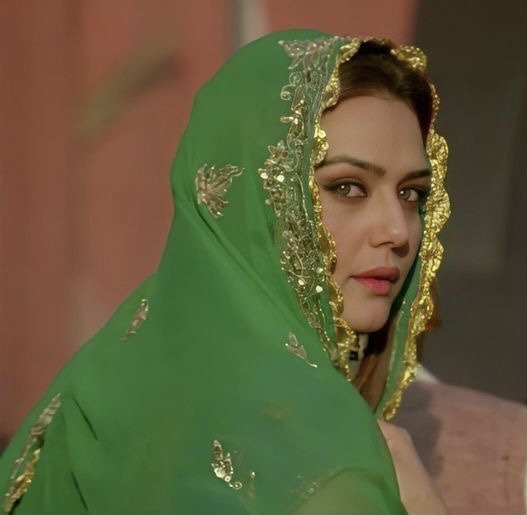
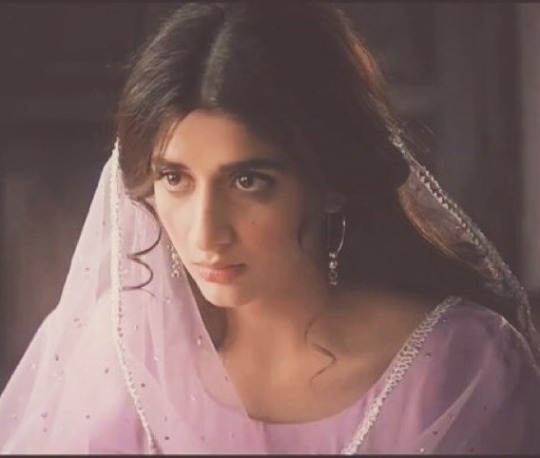
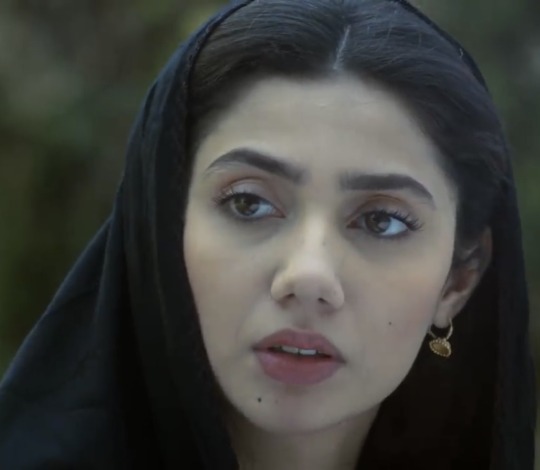
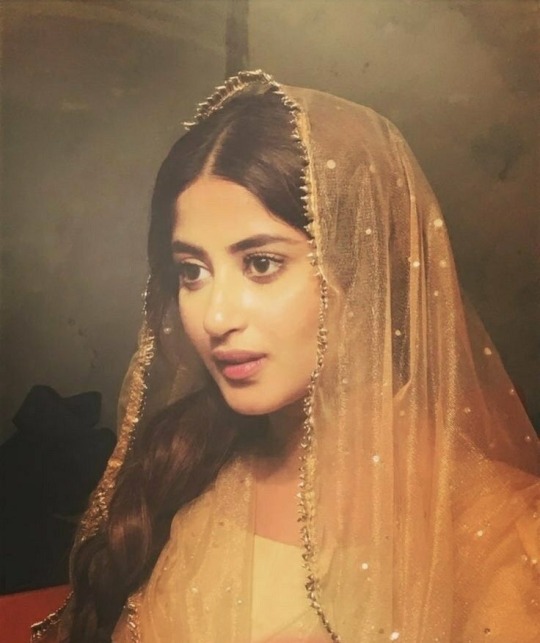
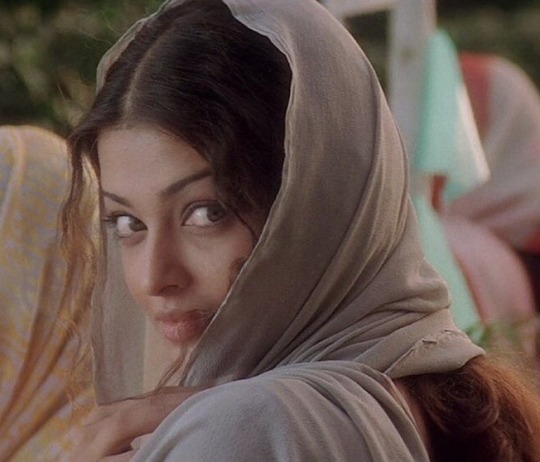
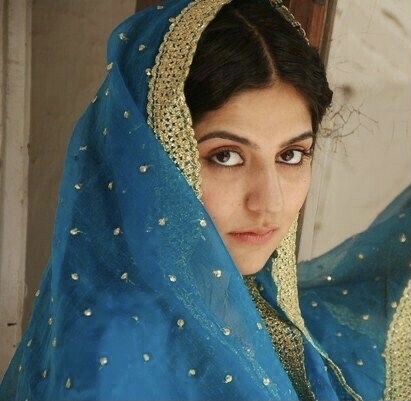
Dupatta makes you look even prettier and I think the desis agree<3
#desi#desiblr#desi teen#desi academia#desi tag#dark academia#pakistani#desi aesthetic#aesthetic#light academia#desi things#desi dark academia#desi culture#desi tumblr#desi shit posting#dupatta#pakistan#mehreenkhan#moodboard#mahira khan#desi moodboard#sajalaly#moodboard aesthetic#aishwariya rai#preity zinta#mawrahocane#sanam Baloch
1K notes
·
View notes
Text
گماں تم کو کہ رستہ کٹ رہا ہے
یقین مجھ کو کہ منزل کھو رہے ہو
حبیب جالب

Gumaa'n tum ko k rasta katt raha hai
Yaqee'n mujh ko k manzil kho rahe hou
Habeeb Jalib
#Habeeb Jalib#urdu poetry#اردو شعر#حبیب جالب#اردو ادب#اردو شاعری#اردو غزل#اردو#اردو پوسٹ#urdupoetry#urdu quote#urdu shayari#urdu literature#urdu ghazal#urdu stuff#urduadab#urdu#desi tumblr#just desi things#desi larki#life of a desi girl#desi academia#pakistan#urdu aesthetic#desi culture#pakistani aesthetics
94 notes
·
View notes
Text
Okay now what's the deal with hating on kathak for its connection with mughal history.
You don't even know a thing about dance but you got to hate it mindlessly
#i love the sentiment of having pride for our own indian culture art and traditions but not at the cost of#bringing down other cultures especially islamic#like this girl was doing kathak and mostly these so called traditional men commented pakistan bhejo yahan nahi chalta yeh sab#the social media trend of tum sufi hum hanuman chalisa#this is making you look just purely dumb#choice sunne ki and unch nich dikhane mein farak hai bhaiya#fr i myself listen to bhajans and stotram which doesn't make me superior to those listening to sufi#zara social media ke changul se bahar niklo tum saala divide and rule abhi bhi chal raha hai#dni pls aise hi tumblr anon hate aata hai
114 notes
·
View notes
Text

#sherwani#pakistan#pakistani outfit#pakistani costume#pakistani attire#pakistani fashion#india#indian#indian fashion#indian folk#indian costume#indian culture#indian attire#indian outfit#southeast asia#asian#man's fashion#man fashion#asian folk#asian fashion#asian costume#asian culture#asian outfit#asian attire#asian folk costume#pakistani culture#pakistani folk#शेरवानी
74 notes
·
View notes
Text
Resource List for Learning Balochi
Hello! Do you want to learn Balochi but don't know where to start? Then I've got the perfect resource list for you and you can find its link below! Let me know if you have any suggestions to improve it. Here is what the resource list contains;
"Handmade" resources on certain grammar concepts for easy understanding.
Resources on learning the script.
Websites to practice reading the script.
Documents to enhance your vocabulary.
Notes on Colloquial Language.
Music playlists
List of podcasts/audiobooks And a compiled + organized list of websites you can use to get hold of grammar!
#langauge learning#language#language resources#discord server#langblr#desiblr#studyblr#south asia#south asians#culture#desi#pakistan#pakistani#pakistan culture#pakistan history#afghanistan#afghan people#afghan man#balochistan#baluchestan#baluchistan pakistan#baluchistan liberation army#baluchistan
0 notes
Text
OMG GUYS ITS HAPPENING
We are getting our stuff back yayyyyy!!!!!
The imperialist assholes are getting what they deserve 😗😗👍
#desi academia#desi things#south asian#desi dark academia#desi memes#indian aesthetic#desi aesthetic#desiblr#desi tumblr#spotify#partition#india pakistan#desi culture#desi stuff#desi tag#just desi things
165 notes
·
View notes
Text
Origins of the Pibo: Let’s take a trip along the Silk Road.
1. Introduction to the garment:
Pibo 披帛 refers to a very thin and long shawl worn by women in ancient East Asia approximately between the 5th to 13th centuries CE. Pibo is a modern name and its historical counterpart was pei 帔. But I’ll use pibo as to not confuse it with Ming dynasty’s xiapei 霞帔 and a much shorter shawl worn in ancient times also called pei.
Below is a ceramic representation of the popular pibo.
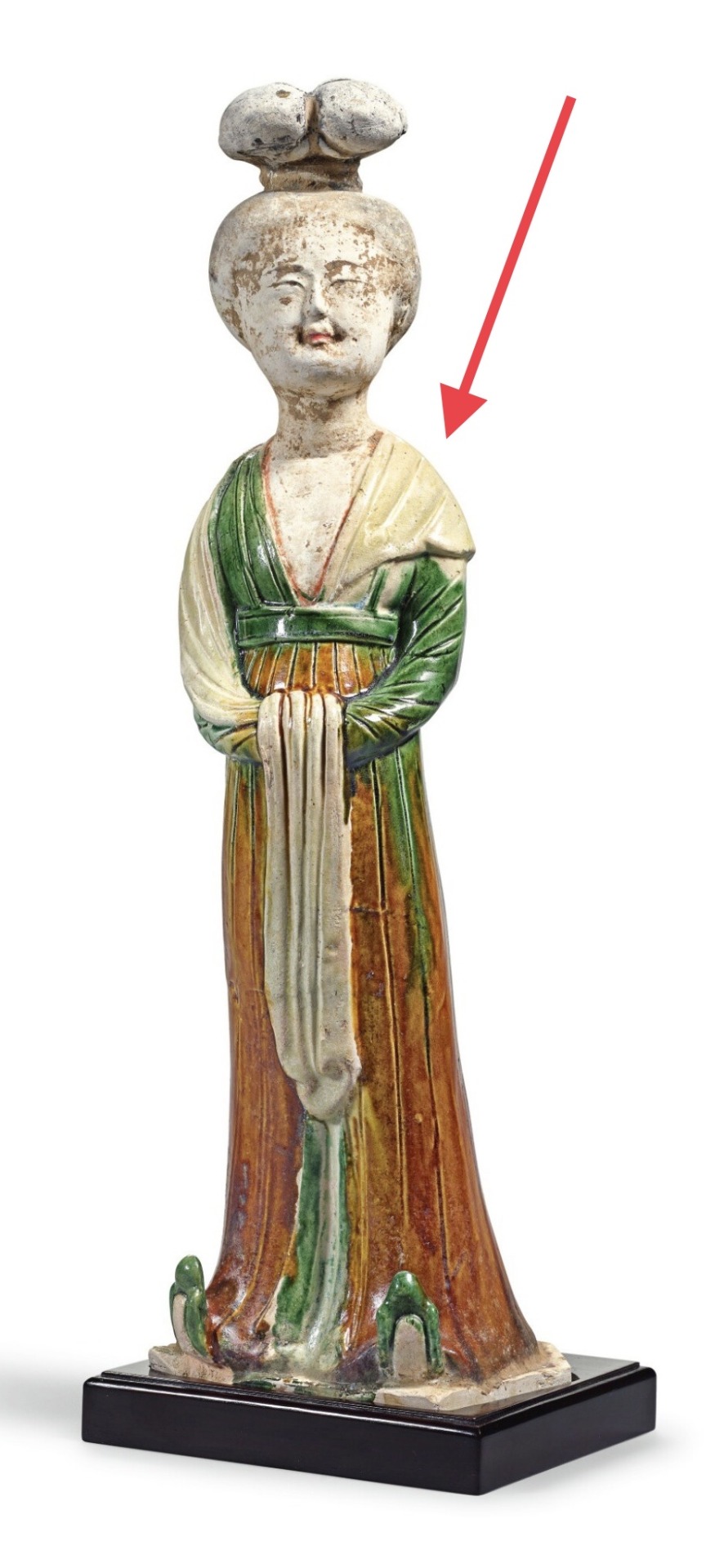
A sancai-glazed figure of a court lady, Tang Dynasty (618–690, 705–907 CE) from the Sze Yuan Tang Collection. Artist unknown. Sotheby’s [image source].
Although some internet sources claim that pibo in China can be traced as far back as the Qin (221-206 BCE) or Han (202 BCE–9 CE; 25–220 CE) dynasties, we don’t start seeing it be depicted as we know it today until the Northern and Southern dynasties period (420-589 CE). This has led to scholars placing pibo’s introduction to East Asia until after Buddhism was introduced in China. Despite the earliest art representations of the long scarf-like shawl coming from the Northern and Southern Dynasties period, the pibo reached its popularity apex in the Tang Dynasty (618–690 CE: 705–907 CE).
Academic consensus: Introduction via the Silk Road.
The definitive academic consensus is that pibo evolved from the dajin 搭巾 (a long and thin scarf) worn by Buddhist icons introduced to China via the Silk Road from West Asia.
披帛是通过丝绸之路传入中国的西亚文化, 与中国服饰发展的内因相结合而流行开来的一种"时世妆" 的形式. 沿丝绸之路所发现的披帛, 反映了丝绸贸易的活跃.
[Trans] Pibo (a long piece of cloth covering the back of the shoulders) was a popular female fashion period accessory introduced to China by West Asian cultures by way of the Silk Road and the development of Chinese costumes. The brocade scarves found along the Silk Road reflect the prosperity of the silk trade that flourished in China's past (Lu & Xu, 2015).
I want to add to the above theory my own speculation that, what the Chinese considered to be dajin, was most likely an ancient Indian garment called uttariya उत्तरीय.
2. Personal conjecture: Uttariya as a tentative origin to pibo.
In India, since Vedic times (1500-500 BCE), we see mentions in records describing women and men wearing a thin scarf-like garment called “uttariya”. It is a precursor of the now famous sari. Although the most famous depiction of uttariya is when it is wrapped around the left arm in a loop, we do have other representations where it is draped over the shoulders and cubital area (reverse of the elbow).
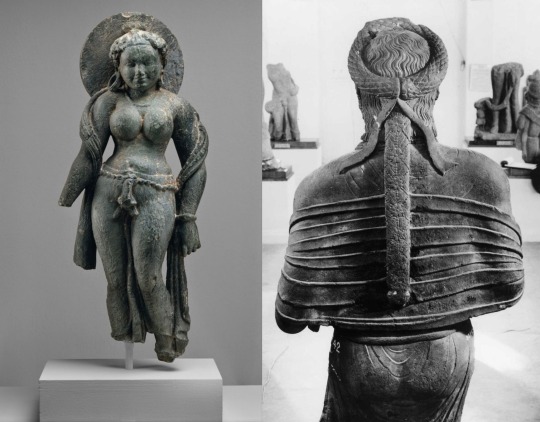
Left: Hindu sculpture “Mother Goddess (Matrika)”, mid 6th century CE, gray schist. Artist unknown. Looted from Rajasthan (Tanesara), India. Photo credit to Metropolitan Museum of Art, New York, United States [image source].
Right: Rear view of female statue possibly representing Kambojika, the Chief Queen of Mahakshatrapa Rajula, ca. 1st century CE. Artist unknown. Found in the Saptarishi Mound, Mathura, India. Government Museum, Mathura [image source].
Buddhism takes many elements from Hindu mythology, including apsaras अप्सरा (water nymphs) and gandharvas गन्धर्व (celestial musicians). The former was translated as feitian 飞天 in China. Hindu deities were depicted wearing clothes similar to what Indian people wore, among which we find uttariya, often portrayed in carvings and sculptures of flying and dancing apsaras or gods to show dynamic movement. Nevertheless, uttariya long predated Buddhism and Hinduism.
Below are carved representation of Indian apsaras and gandharvas. Notice how the uttariya are used.

Upper left: Carved relief of flying celestials (Apsara and Gandharva) in the Chalukyan style, 7th century CE, Chalukyan Dynasty (543-753 CE). Artist Unknown. Aihole, Karnataka, India. National Museum, New Delhi, India [image source]. The Chalukyan art style was very influential in early Chinese Buddhist art.
Upper right: Carved relief of flying celestials (gandharvas) from the 10th to the 12th centuries CE. Artist unknown. Karnataka, India. National Museum, New Delhi, India [image source].
Bottom: A Viyadhara (wisdom-holder; demi-god) couple, ca. 525 CE. Artist unknown. Photo taken by Nomu420 on May 10, 2014. Sondani, Mandsaur, India [image source].
Below are some of the earliest representations of flying apsaras found in the Mogao Caves, Gansu Province, China. An important pilgrimage site along the Silk Road where East and West met.
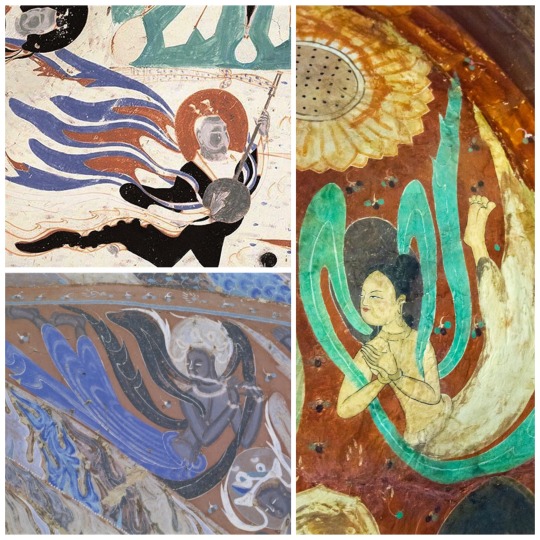
Left to right: Cave No. 461, detail of mural in the roof of the cave depicting either a flying apsara or a celestial musician. Western Wei dynasty (535–556 CE). Artist unknown. Mogao Grottoes, Dunhuang, China [image source].
Cave 285 flying apsara (feitian) in one of the Mogao Caves. Western Wei Dynasty (535–556 CE), Artist unknown. Photo taken by Keren Su for Getty Images. Mogao Grottoes, Dunhuang, China [image source].
Cave 249. Mural painting of feitian playing a flute, Western Wei Dynasty (535-556 CE). Image courtesy by Wang Kefen from The Complete Collection of Dunhuang Grottoes, Vol. 17, Paintings of Dance, The Commercial Press, Hong Kong, 2001, p. 15. Mogao Grottoes, Dunhuang, China [image source].
I theorize that it is likely that the pibo was introduced to China via Buddhism and Buddhist iconography that depicted apsaras (feitian) and other deites wearing uttariya and translated it to dajin.
3. Trickle down fashion: Buddhism’s journey to the East.
However, since Buddhism and its Indian-based fashion spread to West Asia first, to Sassanian Persians and Sogdians, it is likely that, by the time it reached the Han Chinese in the first century CE, it came with Persian and Sogdian influence. Persians’ fashion during the Sassanian Empire (224–651 CE) was influenced by Greeks (hellenization) who also had a a thin long scarf-like garment called an epliblema ἐπίβλημα, often depicted in amphora (vases) of Greek theater scenes and sculptures of deities.

Left to right: Dame Baillehache from Attica, Greece. 3rd century BCE, Hellenistic period (323-30 BCE), terracotta statuette. Photo taken by Hervé Lewandowski. Louvre Museum, Paris, France [image source].
Deatail view of amphora depicting the goddess Artemis by Athenian vase painter, Andokides, ca. 525 BCE, terracotta. Found in Vulci, Italy. Altes Museum, Berlin, Germany [image source].
Statue of a Kore (young girl), ca. 570 BCE, Archaic Period (700-480 BCE), marble. Artist unknown. Uncovered from Attica, Greece. Acropolis Museum, Athens, Greece [image source].
Detail view of Panathenaic (Olympic Games) prize amphora with lid, 363–362 BCE, Attributed to the Painter of the Wedding Procession and signed by Nikodemos, terracotta. Uncovered from Athens, Greece. J. Paul Getty Museum, Los Angeles, California, United States [image source].
Roman statue depicting Euterpe, muse of lyric poetry and music, ca. 2nd century CE, marble, Artist unknown. From the Villa of G. Cassius Longinus near Tivoli, Italy. Photo taken by Egisto Sani on March 12, 2012, Vatican Museums, Rome, Italy [image source].
Greek (or Italic) tomb mural painting from the Tomb of the Diver, ca. 470 BCE, fresco. Artist unknown. Photo taken by Floriano Rescigno. Necropolis of Paestum, Italy [image source].
Below are Iranian and Iraqi period representations of this long thin scarf.

Left to right: Closeup of ewer likely depicting a female dancer from the Sasanian Period (224–651 CE) in ancient Persia , Iran, 6th-7th century CE, silver and gilt. Artist unknown. Mary Harrsch. July 10, 2015. Arthur M. Sackler Gallery of Asian Art, Smithsonian, Washington D.C [image source].
Ewer with nude dancer probably representing a maenad, companion of Dionysus from the Sasanian Period (224–651 CE) in ancient Persia, Iran, 6th-7th century CE, silver and gilt. Artist unknown. Mary Harrsch. July 16, 2015. Arthur M. Sackler Gallery of Asian Art, Smithsonian, Washington D.C [image source].
Painting reconstructing the image of unveiled female dancers depicted in a fresco, Early Abbasid period (750-1258 CE), about 836-839 CE from Jawsaq al-Khaqani, Samarra, Iraq. Museum of Turkish and Islamic Art, Istanbul [image source].
The earliest depictions of Buddha in China, were very similar to West Asian depictions. Ever wonder why Buddha wears a long draped robe similar to a Greek himation (Romans called it toga)?
Take a look below at how much the Greeks influenced the Kushans in their art and fashion. The top left image is one of the earliest depictions of Buddha in China. Note the similarities between it and the Gandhara Buddha on the right.
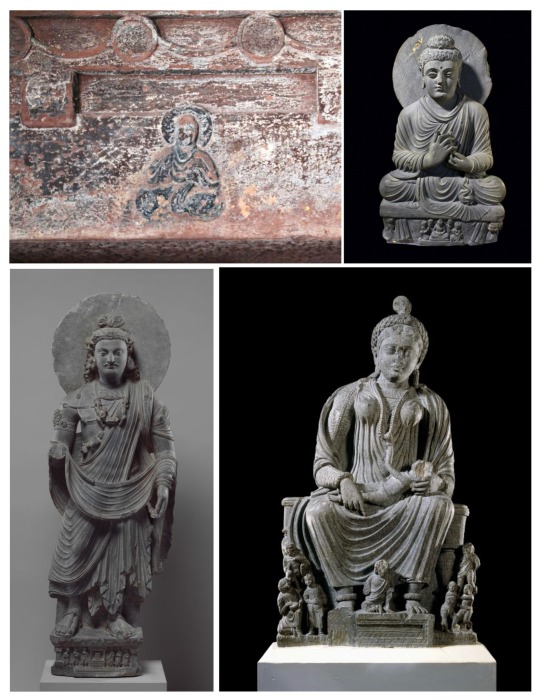
Left: Seated Buddha, Mahao Cliff Tomb, Sichuan Province, Eastern Han Dynasty, late 2nd century C.E. (photo: Gary Todd, CC0).
Right: Seated Buddha from Gandhara, Pakistan c. 2nd–3rd century C.E., Gandhara, schist (© Trustees of the British Museum)
Standing Bodhisattva Maitreya (Buddha of the Future), ca. 3rd century, gray schist. From Gandhara, Pakistan. Image credit to The Metropolitan Museum of Art, New York City, United States [image source].
Statue of seated goddess Hariti with children, ca. 2nd to 3rd centuries CE, schist. Artist unknown. From Gandhara, Pakistan. The British Museum, London, England [image source].
Before Buddhism spread outside of Northern India (birthplace), Indians never portrayed Buddha in human form.
Early Buddhist art is aniconic, meaning the Buddha is not represented in human form. Instead, Buddha is represented using symbols, such as the Bodhi tree (where he attained enlightenment), a wheel (symbolic of Dharma or the Wheel of Law), and a parasol (symbolic of the Buddha’s royal background), just to name a few. […] One of the earliest images [of Buddha in China] is a carving of a seated Buddha wearing a Gandharan-style robe discovered in a tomb dated to the late 2nd century C.E. (Eastern Han) in Sichuan province. Ancient Gandhara (located in present-day Afghanistan, Pakistan, and northwest India) was a major center for the production of Buddhist sculpture under Kushan patronage. The Kushans occupied portions of present-day Afghanistan, Pakistan, and North India from the 1st through the 3rd centuries and were the first to depict the Buddha in human form. Gandharan sculpture combined local Greco-Roman styles with Indian and steppe influences (Chaffin, 2022).
In the Mogao Caves, which contain some of the earliest Buddhist mural paintings in China, we see how initial Chinese Buddhist art depicted Indian fashion as opposed to the later hanfu-inspired garments.

Left to right: Cave 285, detail of wall painting, Western Wei dynasty (535–556 CE). Mogao Grottoes, Dunhuang, China. Courtesy the Dunhuang Academy [image source]. Note the clothes the man is wearing. It looks very similar to a lungi (a long men’s skirt).
Photo of Indian man sitting next to closed store wearing shirt, scarf, lungi and slippers. Paul Prescott. February 20, 2015. Varanasi, India [image source].
Cave 285, mural depiction of worshipping bodhisattvas, 6th century CE, Wei Dynasty (535-556 A.D.), Unknown artist. Mogao Grottoes, Dunhuang, China. Notice the half bow on his hips. That is a common style of tying patka (also known as pataka; cloth sashes) that we see throughout Indian history. Many of early Chinese Buddhist paintings feature it, including the ones at Mogao Caves.
Indian relief of Ashoka wearing dhoti and patka, ca. 1st century BC, Unknown artist. From the Amaravathi village, Guntur district, Andhra Pradesh, India. Currently at the Guimet Museum, Paris [image source].
Cave 263. Mural showing underlying painting, Northern Wei Dynasty (386–535 CE). Artist Unknown. Picture taken November 29, 2011, Mogao Grottoes, Dunhuang, China [image source]. Note the pants that look to be dhoti.
Comparison photo of modern dhoti advertisement from Etsy [image source].
Spread of Buddhism to East Asia.

Map depicting the spread of Buddhism from Northern India to the rest of Asia. Gunawan Kartapranata. January 31, 2014 [image source]. Note how Mahayana Buddhism arrived to China after passing through Kushan, Bactrean, and nomadic steppe lands, absorbing elements of each culture along the way.
Wealthy Buddhist female patrons emulated the fantasy fashion worn by apsaras, specifically, the uttariya/dajin and adopted it as an everyday component of their fashion.

Cave 285. feitian mural painting on the west wall, Western Wei Dynasty (535–556 CE). Artist unknown. Mogao Grottoes, Dunhuang, China [image source].
Cave 285. Detail view of offering bodhisattvas (bodhisattvas making offers to Buddha) next to the phoenix chariot on the Western wall of the cave. Western Wei Dynasty (535–556 CE). Artist unknown. Mogao Grottoes, Dunhuang, China [image source].
Cave 61 Khotanese (from the kingdom of Khotan 于阗 [56–1006 CE]) donor ladies, ca. 10th century CE, Five Dynasties period (907 to 979 CE). Artist unknown. Picture scanned from Zhang Weiwen’s Les oeuvres remarquables de l'art de Dunhuang, 2007, p. 128. Uploaded to Wikimedia Commons on October 11, 2012 by Ismoon. Mogao Grottoes, Dunhuang, China [image source].
Detail view of Ladies Adorning Their Hair with Flowers 簪花仕女图, late 8th to early 9th century CE, handscroll, ink and color on silk, Zhou Fang 周昉 (730-800 AD). Liaoning Provincial Museum, Shenyang, China [image source].
Therefore, the theory I propose of how the pibo entered East Asia is:
India —> Greek influenced West Asia (Sassanian Persians, Sogdians, Kushans, etc…) —> Han China —> Rest of East Asia (Three Kingdoms Korea, Asuka Japan, etc…)
Thus, the most likely theory, in my person opinion, is Buddhist iconography depicting uttariya encountered Greek-influenced West Asian Persian, Sogdian, and Kushan shawls, which combined arrived to China but wouldn’t become commonplace there until the explosion in popularity of Buddhism from the periods of Northern and Southern Dynasties to Song.
References:
盧秀文; 徐會貞. 《披帛與絲路文化交流》 [The brocade scarf and the cultural exchanges along the Silk Road]. 敦煌研究 (中國: 敦煌研究編輯部). 2015-06: 22 – 29. ISSN 1000-4106.
#hanfu#chinese culture#chinese history#buddhism#persian#sogdian#kushan#gandhara#indian fashion#uttariya#pibo#history#asian culture#asian art#asian history#asian fashion#east asia#south asia#india#pakistan#iraq#afghanistan#sassanian#silk road#fashion history#tang dynasty#eastern han dynasty#cultural exchange#greek fashion#mogao caves
283 notes
·
View notes
Text
would anyone be interested in volunteering for a Pakistan-India type collective? It's overall southasian that posts and manages events/articles on desi culture etc (+it includes ivy professors and famous people within southasia)
#desi academia#desi aesthetic#desiblr#desi dark academia#desi culture#desi light academia#desi stuff#desi tag#desi shit posting#desi tumblr#pakistan#indian aesthetic#indian cinema#india
28 notes
·
View notes
Text
its crazy how it's accepted that there's so many different types of white people but when it comes to POC and especially brown / desi people we're all just seen as like... indian or something . and not even indian just a stereotype of what people think indians are
#like india in itself is so many different cultures and languages and it is so different place to place#and thats just india#what about pakistan bangladesh the maldives myanmar bhutan nepal etc#even within those countries it varies so much by area#we all LOOK so different too like skintones hair textures the shape of our features. just look at bangladeshis alone 😭#think of it like how much europe varies country to country or the US state to state but like. tenfold#all of that packed into a little subcontinent with the sea around it#obviously happens in basically every continent if u think abt it but especially in africa and asia#vee chats
26 notes
·
View notes